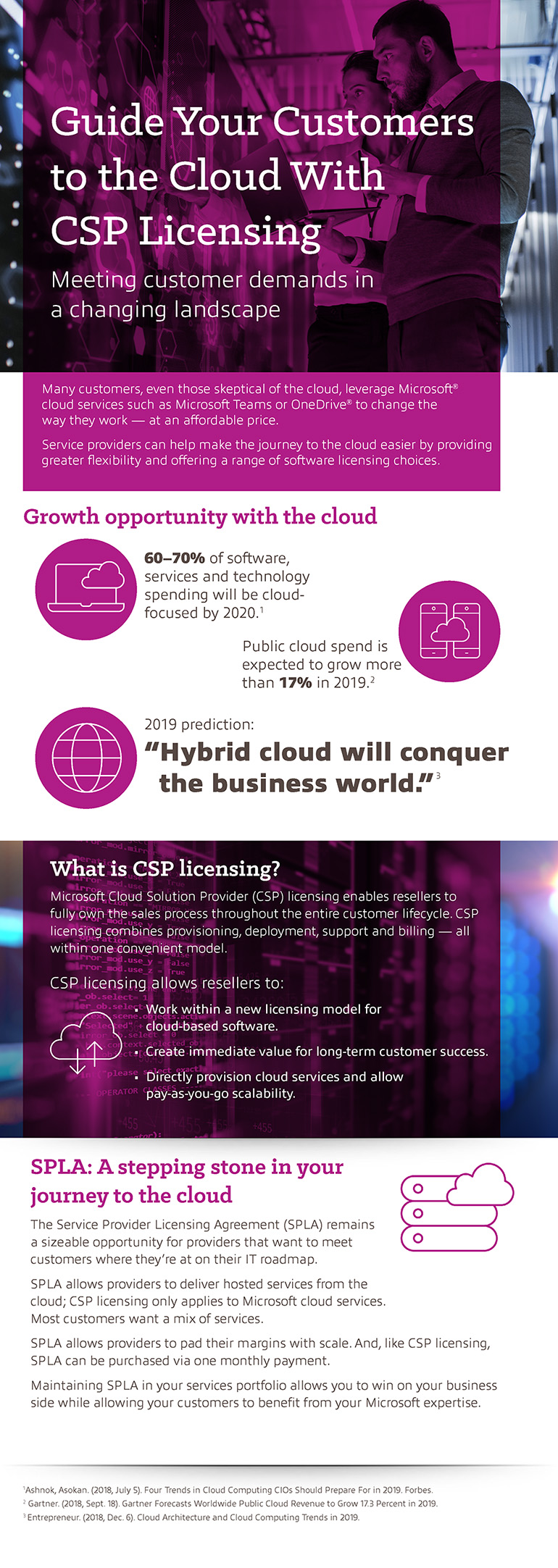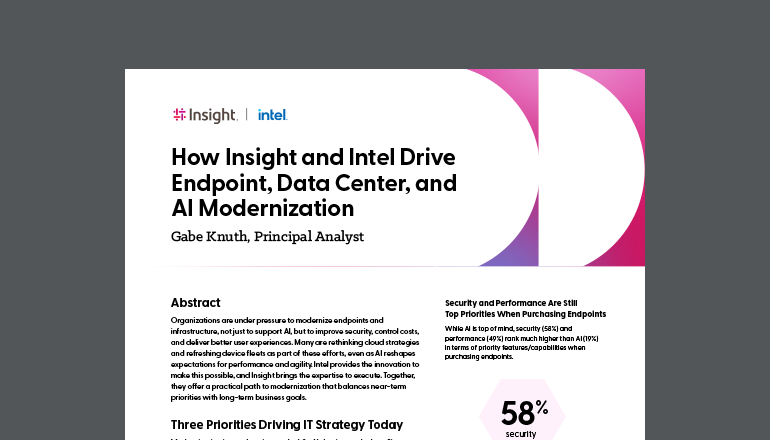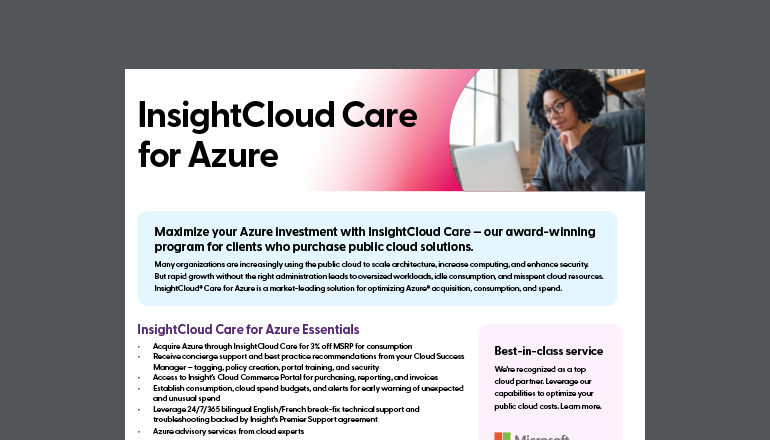Infographic Guide Your Customers to the Cloud With CSP Licensing
By Insight Editor / 21 Dec 2018 / Topics: Cloud
The Cloud Solution Provider (CSP) licensing model from Insight and Microsoft allows you to guide your customers to the cloud. It serves as a stepping stone in your customers’ hybrid cloud experience and maximizes your earning potential.
Accessibility note: The infographic is transcribed below the graphic.

Maximize your earning potential.
Expand your services and meet customers where they’re at on their cloud migration journey.
Infographic text included for screen readers:
Guide Your Customers to the Cloud With CSP Licensing
Meeting customer demands in a changing landscape
Many customers, even those skeptical of the cloud, leverage Microsoft® cloud services such as Skype® for Business or OneDrive® to change the way they work — at an affordable price. Service providers can help make the journey to the cloud easier by providing greater flexible and offering a range of software licensing choices.
Growth opportunity with the cloud
- 60–70% of software, services and technology spending will be cloud-focused by 2020.1
- Public cloud spend is expected to grow more than 17% in 2019.2
- 2019 prediction: “Hybrid cloud will conquer the business world.”3
What is CSP licensing?
Microsoft Cloud Solution Provider (CSP) licensing enables resellers to fully own the sales process throughout the entire customer lifecycle. CSP licensing combines provisioning, deployment, support and billing — all within one convenient model.
CSP licensing allows resellers to:
- Work within a new licensing model for cloud-based software.
- Create immediate value for long-term customer success.
- Directly provision cloud services and allow pay-as-you-go scalability.
SPLA: A stepping stone in journey to cloud
The Service Provider Licensing Agreement (SPLA) remains a sizeable opportunity for providers that want to meet customers where they’re at on their IT roadmap.
SPLA allows providers to deliver hosted services from the cloud; CSP licensing only applies to Microsoft cloud services. Most customers want a mix of services.
SPLA allows providers to pad their margins with scale. And, like CSP licensing, SPLA can be purchased via one monthly payment.
Maintaining SPLA in your services portfolio allows you to win on your business side while allowing your customers to benefit from your Microsoft expertise.
1 Ashnok, Asokan. (2018, July 5). Four Trends in Cloud Computing CIOs Should Prepare For in 2019. Forbes.
2 Gartner. (2018, Sept. 18). Gartner Forecasts Worldwide Public Cloud Revenue to Grow 17.3 Percent in 2019
3 Entrepreneur. (2018, Dec. 6). Cloud Architecture and Cloud Computing Trends in 2019.



